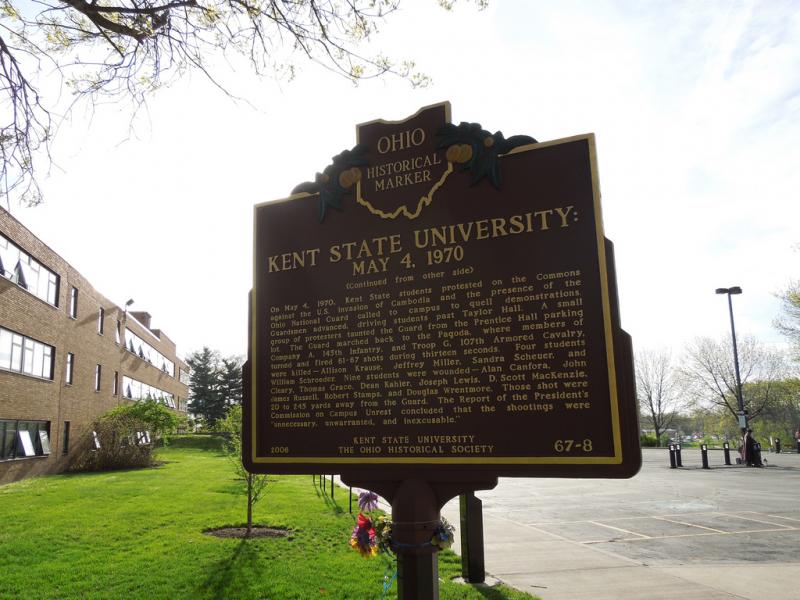2020 marked the 50th anniversary of the Kent State University shootings. On May 4, 1970, the killing of four students by Ohio National Guardsman marked a turning point in the national conversation about the United States’ involvement in the Vietnam War.
By 1970, thousands of Americans were actively protesting the war. In the spring of 1970, several new developments, including the ending of college deferment for the draft, and the April 30 announcement that the U.S. and their South Vietnamese allies had executed an “incursion” into the nation of Cambodia, increased the intensity of the protests across the nation.
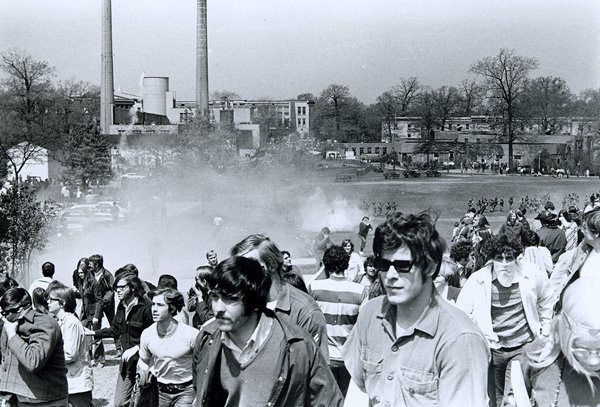
Students on the campus of Kent State University protest the April 30, 1970 announcement of the American invasion of Cambodia.
On May 1 of that year, students at Kent State University held an anti-war protest. On May 2, Kent’s mayor declared a state of emergency and requested that Governor of Ohio James A. Rhodes send National Guard troops to the city to help maintain order. When the first guardsmen arrived in the evening they found the ROTC building on campus in flames. It’s unclear who set the fire, but as firefighters arrived to extinguish the blaze they were harassed by protestors, who were still gathered and cheering as the ROTC building burned. The National Guard troops dispersed tear gas into the crowd to maintain order.
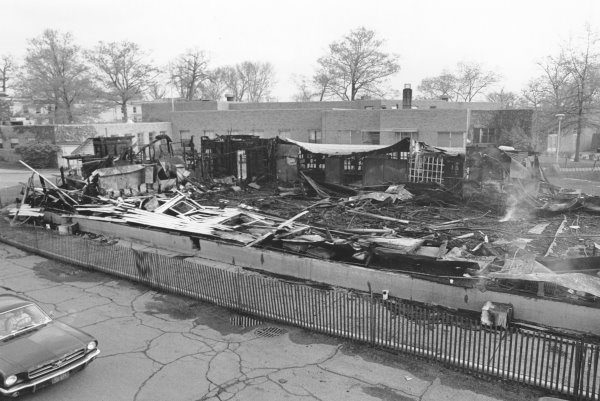
Photograph of the burned-out remains of the Kent State campus ROTC (Reserve Officers’ Training Corps) building. May 1, 1970.
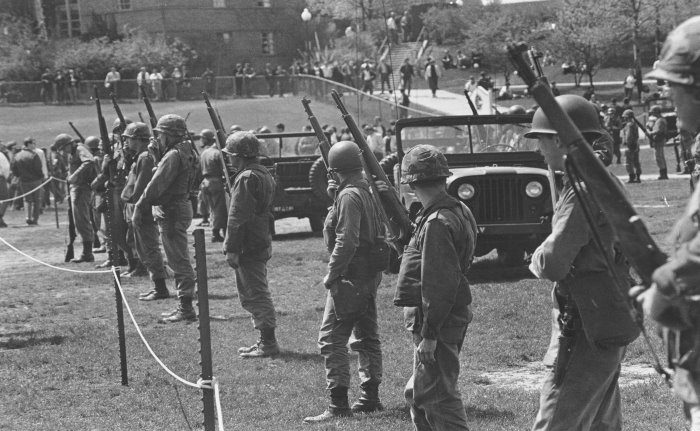
National Guard troops on the campus of Kent State. One of twenty photographs taken by the Kent State University News Service before, during, and after the May, 1970 shootings.
By May 3, about 1,000 National Guard troops were on the Kent State campus and tensions remained high. On May 4 classes resumed and another protest was scheduled for noon that day. The school tried to stop this new protest, but the protestors still gathered. Just as it had been on the previous days, the protestors, both students and non-students, clashed with National Guard troops. Protestors hurled rocks and the guardsmen fired tear gas. But on this day, 29 guardsmen opened fire on the crowd with live ammunition. A total of 67 shots were fired, and in the end, nine students were wounded and four, Allison Krause, Jeff Miller, Sandy Scheuer, and Bill Schroeder, were killed by the gunfire.
Sandra Scheuer and Bill Schroeder had not participated in the protests and were walking between classes.
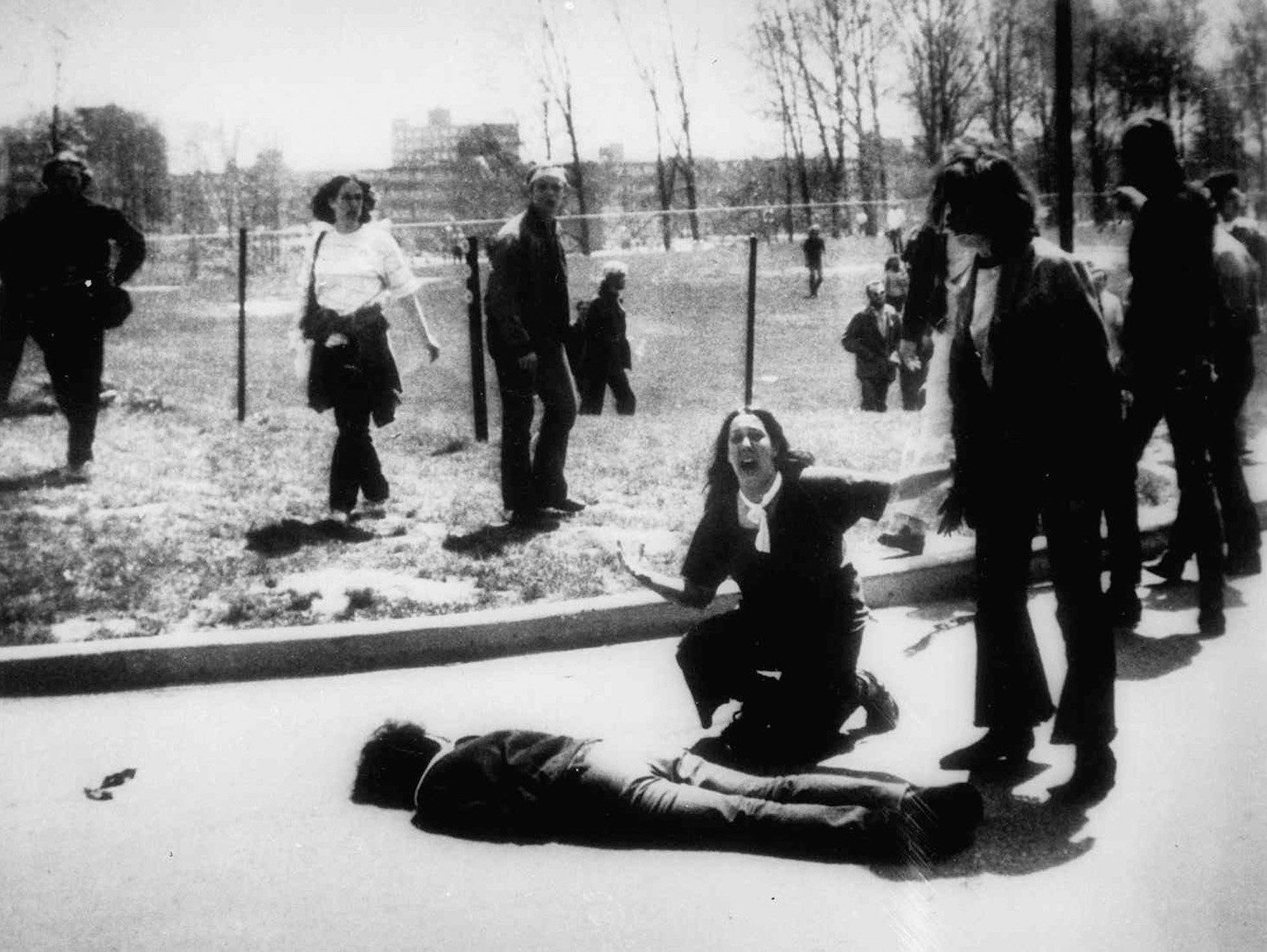
John Filo’s Pulitzer Prize-winning photograph of Mary Ann Vecchio kneeling over the body of Jeffrey Miller minutes after he was fatally shot by the Ohio National Guard.
Rather than leading to a decline in protests, the tragic shootings at Kent State lead to a rise in anti-war demonstrations and caused a wave of public backlash against the government. Fearing violence and outrage on their own campuses, many colleges and universities cancelled classes for the remainder of the 1970 school year.
The various protests drew to an end as President Richard Nixon, who served from 1969-1974, began to withdraw U.S. soldiers from North and South Vietnam. With the signing of the Paris Peace Accords in 1973, which effectively ended U.S. involvement in the Vietnam War, the protests drew to a formal close. Still, the Kent State shootings continue to reverberate through U.S. society and culture. An example of this is Neil Young’s song, “Ohio,” which commemorated the shootings.
In 2017, the Kent State University shooting site was declared a National Historic Landmark.
“The shootings at Kent State on May 4, 1970, were a singular, unexpected, event,” says Laura Davis, Kent State professor emerita of English and founding director of Kent State’s May 4 Visitors Center. “At the same time, they are part of a fabric that includes the Boston Massacre, Wounded Knee and Edmund Pettus Bridge. The Department of the Interior recognizes such enduring places as National Historic Landmarks so that people can make meaning during their own times of the broad patterns in U.S. history.”
